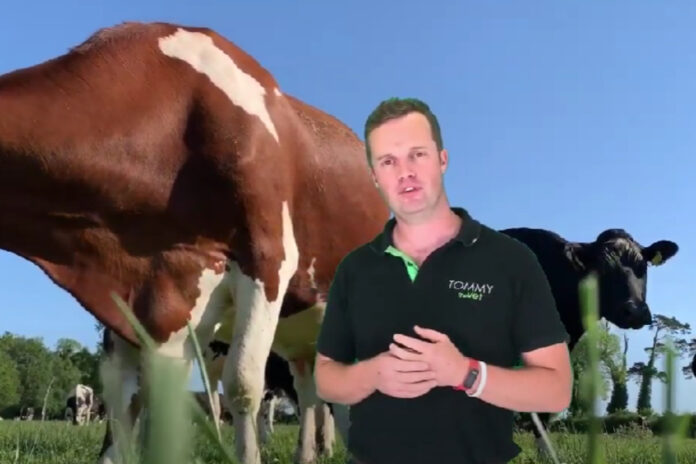Colostrum, feeding, hygiene, fresh air, calf comfort and space are the cornerstones of successful calf rearing, renowned vet, Tommy Heffernan believes.
During his recent ‘Being Brilliant at the Basics Winter Calf Health webinar 2023, ‘Tommy the Vet’, outlined why farmers should focus on these six key areas of calf health.
In a previous article, That’s Farming, summarised the veterinary consultant’s advice on colostrum and feeding, which you can read via this link.
In this news article, we will focus on the third factor that Heffernan discussed, which was hygiene.
The vet told the webinar that “50% of calf diseases are related to hygiene”’, but there are “good, simple” protocols that farmers can roll out on their enterprises to reduce infection pressure.
He commented: “Reducing infection pressure is critical for calf rearing systems, but particularly seasonal systems where we are trying to reduce it over time.”
“What happens during a busy calving season is that in March, with more calves coming, we have more infection pressure, and people are getting tired.”
“The time to double down on hygiene is during the first week of March, so really focus in on that.”
According to this vet, “it is about making it into workable processes,” so that is by simplifying the cleaning process for items such as buckets and feeding equipment.
He also urged farmers to review their automatic milk feeding system’s cleaning frequency and drainage options.
Calf hygiene
His main message was that “small things can make a huge difference”.
“The key thing with good habitats, be it with cleaning and hygiene, is how easy we can make them. If we think about our protocols on a daily and weekly basis, how easy are they to do?”
“How can we make processes on-farm, such as cleaning, easier for us?”
“For example, having a cleaning station where we have high-pressure water and disinfectant on brushes on a drain with a concrete pad, where we can make cleaning easier for ourselves.”
“It could be a cut-in-half IBC where you can just dunk your feeding equipment in. Hygiene around calf cleaning equipment makes a huge difference.”
Calf-rearing cleaning protocol:
During the virtual session, he also provided farmers with a cleaning protocol for calf-rearing equipment:
| Step | Solution | Temperature | Result |
| Rinse | Water | 32-38 degrees C | Removes dirt & milk residues |
| Soak | Chlorinated alkaline detergent solution | 54-57 degrees C | Kills bacteria & lifts milk protein |
| Wash | Water | >49 degrees C | Prevents particular re-attaching to equipment |
| Rinse | Acid sanitiser | Follow the manufacturer’s instructions | Prevents growth of any remaining bacteria |
| Dry | Equipment | raised onto drying | racks |





